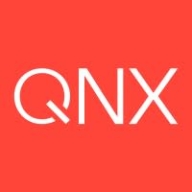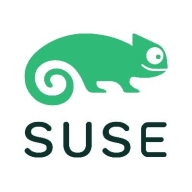

SUSE Linux Enterprise and QNX Neutrino are competing operating systems for different environments. While SUSE has an advantage in enterprise support, QNX's architecture is highly valued for embedded systems.
Features: SUSE Linux Enterprise is known for scalability, robust security features, and seamless integration with cloud services. It supports diverse workloads and strong virtualization capabilities. QNX Neutrino is distinguished by its microkernel architecture, excellent reliability, and real-time processing, making it ideal for automotive and industrial applications.
Ease of Deployment and Customer Service: SUSE Linux Enterprise offers comprehensive deployment tools and extensive service support across various IT environments. QNX Neutrino provides a specialized deployment model optimized for embedded systems with dedicated support in those areas. SUSE's diverse deployment options facilitate enterprise use, while QNX's focused approach supports specialized needs.
Pricing and ROI: SUSE Linux Enterprise often involves higher initial setup costs due to its broad capabilities but offers significant ROI through system efficiency and scalability. QNX Neutrino may have lower setup costs but delivers ROI through enhanced performance in mission-critical scenarios where reliability is crucial. While SUSE's cost supports enterprise growth, QNX's ROI focuses on efficiency in specialized applications.

| Company Size | Count |
|---|---|
| Small Business | 8 |
| Midsize Enterprise | 10 |
| Large Enterprise | 17 |
QNX Neutrino, a real-time operating system from BlackBerry, delivers robust performance for embedded systems across industries like automotive, aerospace, and telecommunications.
QNX Neutrino is designed for high-performance embedded applications, providing deterministic responses that are essential in systems where timing is critical. Its microkernel architecture ensures maximum security and reliability, making it a trusted choice for developing safety-critical applications. QNX Neutrino's ability to support multitasking and asymmetrical processing adds flexibility, supporting resource utilization across different hardware environments.
What are the key features of QNX Neutrino?
What benefits should users look for in reviews?
In industries like automotive, QNX Neutrino powers complex systems such as Advanced Driver Assistance Systems, ensuring real-time data processing for enhanced safety. In aerospace, it supports flight control systems where reliability and timing precision are crucial. Telecommunications benefit from its scalability and fault resilience, enabling robust network infrastructure.
SUSE Linux Enterprise offers features like YaST for server management, seamless integration with Oracle and SAP, and a robust security setup. Renowned for stability, it efficiently supports workstations, SAP workloads, and cloud migrations across diverse industries.
SUSE Linux Enterprise is known for its lightweight design, high performance, and ease of installation. Its flexible architecture supports extensive documentation and efficient patching. The system uses the BTRFS file system for effective virtualization, and community support is significant. However, challenges include package updates causing conflicts, difficult initial setup and software management, high pricing, and support response times. Improvements in security compliance, cloud integration, hardware compatibility, and documentation are also needed.
What are SUSE Linux Enterprise's important features?
What benefits should users expect from using SUSE Linux Enterprise?
Industries like healthcare and banking use SUSE Linux Enterprise for secure transactions and structured application deployment. It is also a choice for organizations involved in testing, automation, and web development, offering support for SAP HANA integration and facilitating cloud migrations.
We monitor all IoT Operating Systems (OS) reviews to prevent fraudulent reviews and keep review quality high. We do not post reviews by company employees or direct competitors. We validate each review for authenticity via cross-reference with LinkedIn, and personal follow-up with the reviewer when necessary.